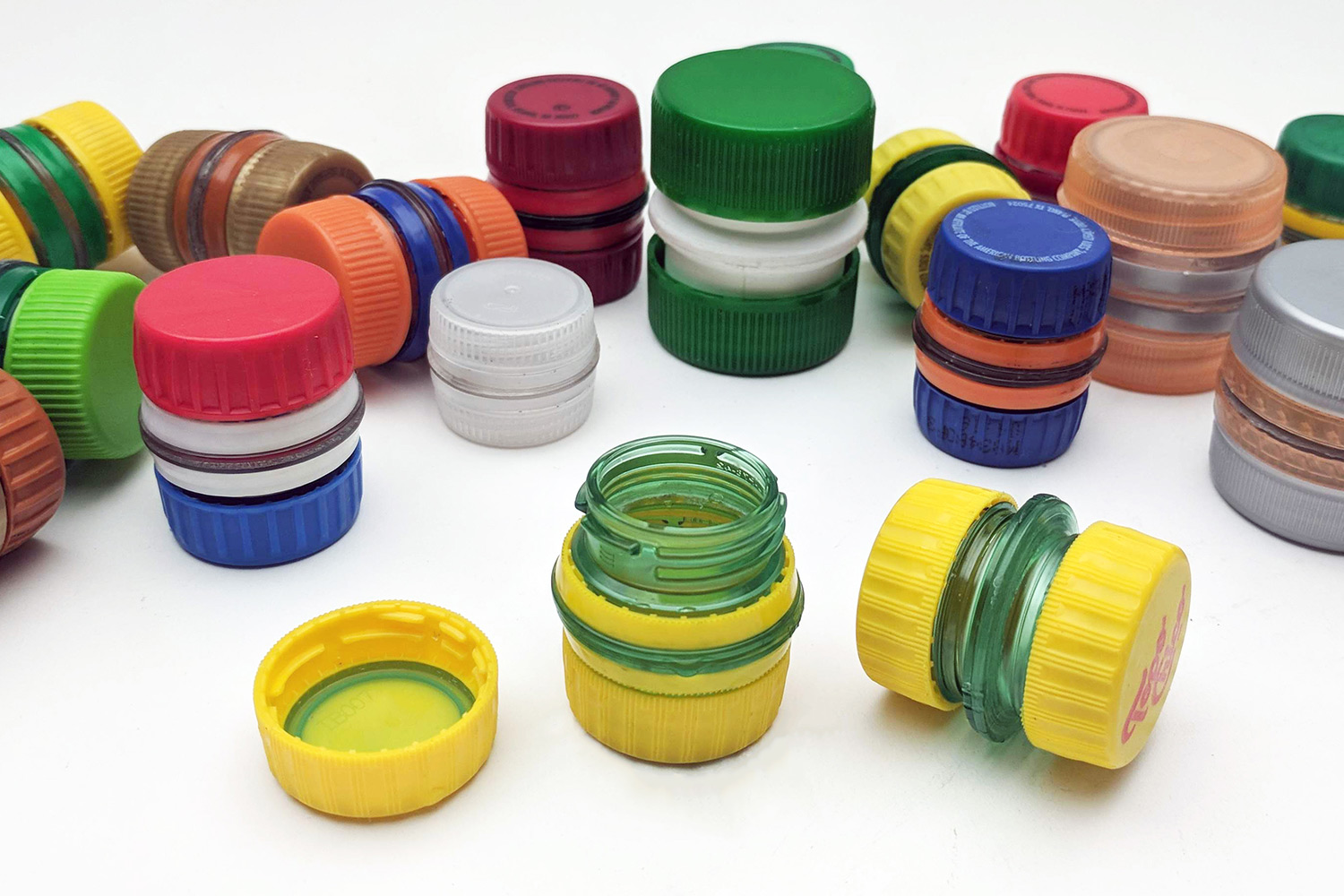

Spin welding works like this: one thing rotates at high speed and, using the heat of friction, gets melted to another thing. Like other kinds of welding, it makes a very strong bond that requires no fasteners or adhesives; unlike them, it’s easy to do without special training using relatively safe, cheap equipment. You can start spin-welding in your garage with nothing more exotic than a drill press, a couple of skate bearings, and a few recyclable plastic bottles.
Safety first! Wear safety glasses to keep flying chips out of your eyes, and thin rubber gloves to prevent friction burns on your hands. Never wear heavy gloves around rotating equipment, as they may catch on spinning parts and pull your fingers in with them. If you have long hair, keep it up, back, and out of the way.
Project overview
- Time: 45 minutes
- Cost: $15 for parts
- Difficulty: Easy
Tools needed
- Hacksaw
- Sandpaper
- Drill press with 1/2″ chuck
- Drill press vice (or C-clamps)
- 5/16″ twist drill
- Screwdriver
Materials needed
- 3 screw-top plastic beverage bottles, recycling code 1 (PET)
- 4 matching caps
- 1 or 2 skate bearings, 8 × 22 × 7 mm (608-2RS)
- 2 hex bolts, 5/16″18 × 1″
- 2 flat washers, 5/16″
- 1 threaded rod coupling, 5/16″18
- 1 hex nut, 5/16″18
- 1 wooden board
- 3 small wood screws, #4 × 1/2″
How to spin weld

Saw through the bottle necks right below the flange. Rub the flanges against coarse sandpaper to smooth off the cuts.

Fully tighten your drill press chuck and use the closed jaws to press a bearing into one of the bottle tops from the flange side. Press one bearing in as far as it will go, then press a second one in behind it.

Screw a bottle cap onto the threads and use the bearings as a guide to drill a hole exactly in its center. Repeat with a second cap.

Pass the long hex bolt through the hole in one bottle cap from the inside. Add a washer on the other side and screw the threaded coupling on finger-tight. This is the “driver.” Pass the short hex bolt through the other drilled cap and secure with a washer and regular hex nut. This is the “spinner.”
RELATED: We’ve wasted so much plastic, it’s almost impossible to picture—these charts will help

Fix the bottle top containing the bearings to the board with three small wood screws spaced evenly around its flange. Insert the protruding bolt threads on the spinner into the bearings and check that it turns freely.

Thread one of the remaining bottle tops into the driver and the other into the spinner. Chuck the driver into your drill press by the threaded coupling. Set the board on the press table and—without turning anything on—lower the spindle, adjust the board’s position until the bottle tops are exactly aligned, and clamp the board to the table. Raise and lower the spindle a couple times to make sure everything stays lined up.

Set your drill press to 1400 RPM and pulse the power to check for vibration. If it’s running true, turn the power on again, hold the spinner stationary between the thumb and forefinger of your left hand, and operate the press with your right. Touch the parts together as gently as possible. After a few seconds, the plastic will start to soften and the surfaces will bind. When that happens, let go of the spinner and turn off the power. Let the parts spin down together, then raise the spindle. If you did it right, the two parts are now one part and will lift together.

Unthread the spinner from the part, then unthread the part from the driver. Now screw the remaining bottle caps onto each end. Congrats! You’ve just made a cute little crush-proof watertight capsule that’s good for keeping pills, thumb drives, jewelry, and other small precious things safe and dry in your pocket, backpack, or purse. Give it a good rinse with soap and water, let it dry, and you’re good to go.

The tools you’ve built will make dozens or even hundreds of these things, and once you’ve got the hang of it, the process is fast, free, and fun. Raw materials are literally everywhere, and your goofs are 100 percent recyclable.
RELATED: How to make a light-following robot in one afternoon
The project as written works for the common PCO1881 threaded cap found on screw-top plastic bottles all over the world, but it’s easily adapted to larger containers if you’re able to accurately locate and drill holes in the center of their caps.
With slightly fancier hardware, it would be easy to make the driver and spinner self-aligning by adding a center guide rod that rides up and down in the bearings throughout the welding operation.
Finally, note that while both parts must be free to spin as the weld cools, only one of them actually has to be round. And though different plastics can’t normally be welded to each other, PET and polycarbonate (which is sold in sheets at most hardware stores) are an exception.